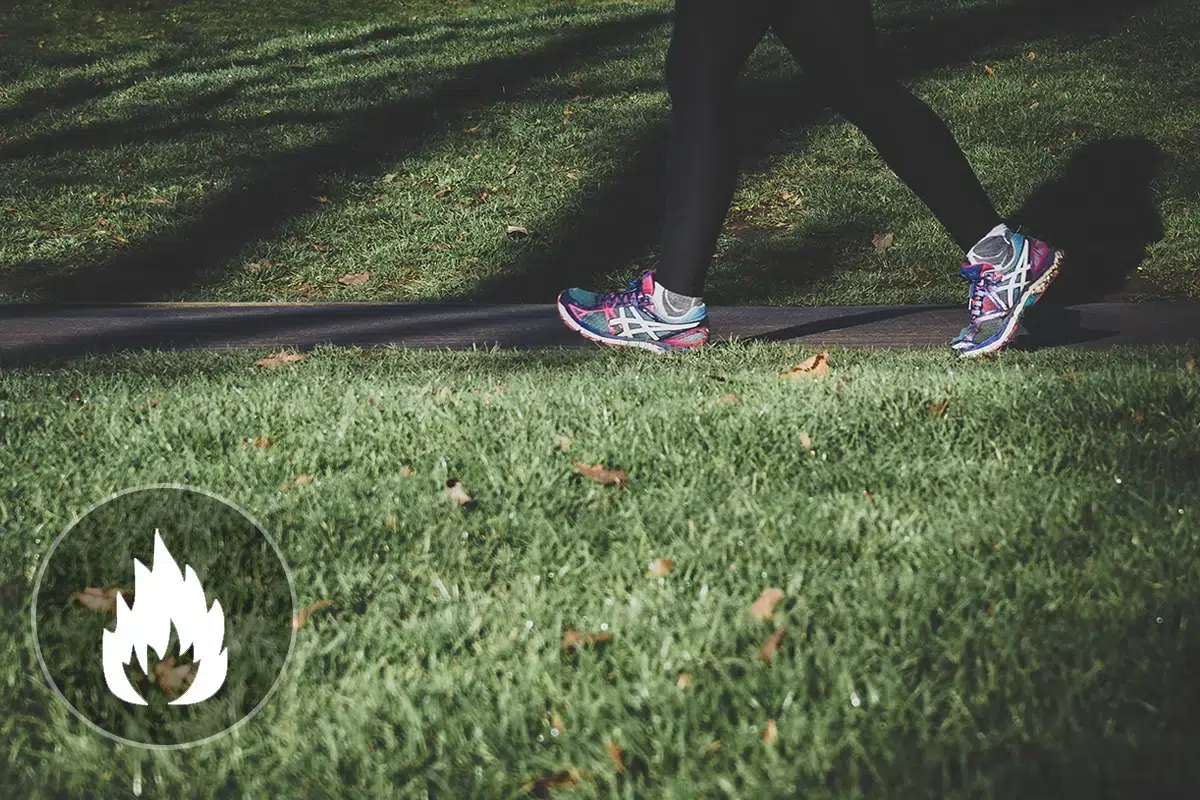Show summary Hide summary
How many calories do we burn brisk walking or power walking?

Everything you need to know about power walking
🚶Wondering how many calories you burn in 30 minutes or 1 hour of brisk walking? Simply enter your profile and duration – our tool will show you your estimated energy expenditure.
Discover other REGIVIA calculators:
Brisk walking or power walking: A few examples of energy expenditure depending on weight and activity time.
Use the table below to see how many calories you lose by brisk walking!
Walking
Fast
Expenditure in Kilocalories
| Weight | 15 minutes | 30 minutes | 1 hour |
|---|---|---|---|
| 40 kg | 47 | 95 | 189 |
| 50 kg | 59 | 118 | 236 |
| 60 kg | 71 | 142 | 284 |
| 70 kg | 83 | 165 | 331 |
| 80 kg | 95 | 189 | 378 |
| 90 kg | 106 | 213 | 425 |
Walking
Olympic
Expenditure in Kilocalories
| Weight | 15 minutes | 30 minutes | 1 hour |
|---|---|---|---|
| 40 kg | 68 | 137 | 273 |
| 50 kg | 85 | 171 | 341 |
| 60 kg | 102 | 205 | 410 |
| 70 kg | 119 | 239 | 478 |
| 80 kg | 137 | 273 | 546 |
| 90 kg | 154 | 307 | 614 |
See detailed calculations and metabolic equivalent for brisk walking
Everything you need to know about power walking
FIND OUT MORE ABOUT POWER WALKING
Brisk or sport walking is a physical activity that is accessible to everyone and offers numerous health benefits. It involves walking at a brisk pace, with steps that are faster than normal. It can be done outdoors or on a treadmill, depending on your preferences and abilities.
Some benefits of brisk walking or power walking:
- Improved cardiovascular fitness: Brisk walking is an excellent cardiovascular exercise that stimulates the cardiovascular system and strengthens the heart. It promotes better blood circulation, reduces the risk of heart disease and improves endurance.
- Burn calories: Brisk walking is an effective activity for burning calories and promoting weight loss. By increasing the intensity of your walking, you stimulate your metabolism, resulting in greater energy expenditure.
- Muscle strengthening: Brisk walking involves a number of muscle groups, in particular the legs, buttocks, abdominal muscles and arms. By walking with correct posture and swinging your arms, you strengthen and tone your whole body.
- Improved bone health: Brisk walking is a moderate-impact exercise that stimulates bone formation and promotes bone density. This can help prevent osteoporosis and maintain strong, healthy bones.
- Mental stimulation and stress reduction : Brisk outdoor walking can be beneficial for mental health. It offers an opportunity to relax, connect with nature and reduce stress. Regular walking can also improve mood, promote mental clarity and reduce symptoms of anxiety and depression.
Brisk or sporty walking is a versatile and accessible activity that can easily be incorporated into your daily routine. Whether you want to keep fit, lose weight, improve your cardiovascular health or simply relax, brisk walking is an excellent option. Just remember to wear good walking shoes, stretch before and after each session, and adjust the intensity to your fitness level.
You can also check the number of calories burned for :
How to calculate the number of calories burned brisk walking or power walking
The result displayed is expressed in Kcal and is calculated using the MET (Metabolic Equivalent of Task). The MET for each activity is the result of statistical data and cannot therefore be interpreted as an exact calculation, but rather as an estimate that takes into account the MET value and the ratio between the time spent doing an activity and the individual’s weight.
For example: The MET value for brisk walking is 4.5. This means that a person doing brisk walking consumes 4.5 times more energy than when resting. This varies, of course, with the level of intensity, as we’ll see below.
MET values for different levels of walking intensity
- Calm walking MET = 3
- Brisk walking MET = 4.5
- Nordic Walking MET = 5
- Olympic walking MET = 6.5
Discover the detailed formula to calculate your daily energy expenditure while brisk walking or power walking
Consumption in Kcal per minute = (METs*3.5*Weight in kilos)/200
This gives for a 60 kg person doing brisk walking for 30 minutes:
Consumption in Kcal per minute = (4.5*3.5*60)/200 = 4.725 Kcal/min
So for 30 minutes = 4.725*30 = 142 kcal for 30 minutes
All sports in detail!
Boost Your Caloric Expenditure with Brisk and Power Walking
Brisk and power walking are excellent ways to enhance your daily caloric expenditure and overall fitness. Incorporate more steps into your routine to achieve your health and weight loss goals. Explore the following links for more insights:
- How many steps a day should you take to stay healthy?
- How long does it take to walk 10,000 steps?
- How many km is 10,000 steps?
- How many steps should you take a day to lose weight and shed pounds?
- How many steps are in a kilometer?
- How many steps should we take a day to become more active and avoid being sedentary?



















































